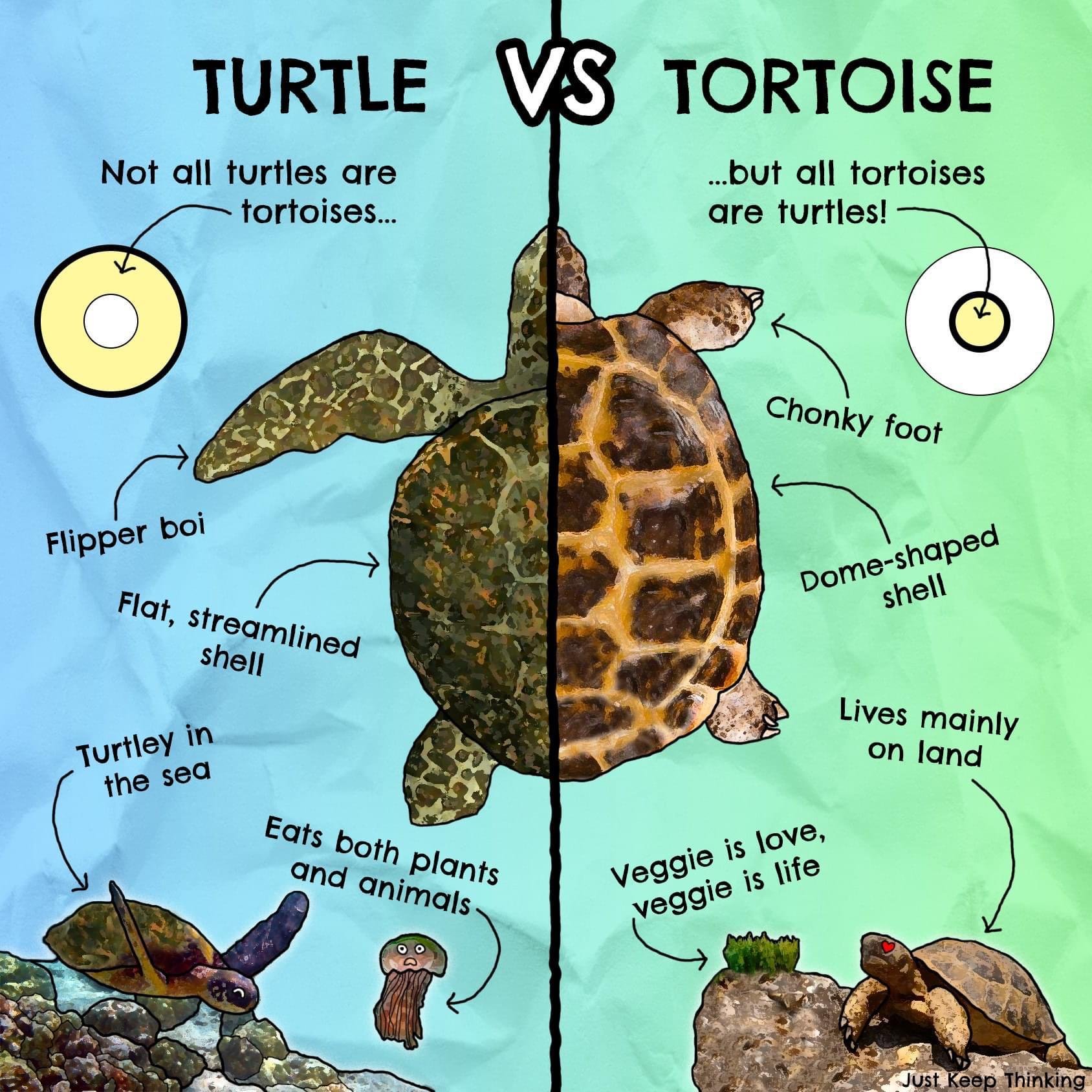Remarkable Creature: The Tortoise
The following post is an excerpt from the weekly newsletter - the January 7, 2024 edition.
Thanks to Ali Feldman, one of my newsletter readers equally passionate about nature, this week I am featuring the tortoise. Ali sent me a recent article about Jonathan, a Seychelles tortoise who is 191 years old, and the oldest living animal in the world. This particular creature lives on St. Helena, a small volcanic in the middle of the South Atlantic, and one of the most remote places on Earth. (Napoleon Bonaparte died there in 1821 after his last and final exile following the battle of Waterloo in 1815.)
Introduction
Tortoises are reptiles belonging to the Testudines order, and represent a unique and enduring aspect of the animal kingdom. They are a specific subgroup of turtles that are adapted to live on land, with feet modified for walking and a shell designed for protection in terrestrial habitats. With a distinctive shell that serves as protective armor, the tortoise has evolved over millions of years, adapting to various environments across the globe. From its physical characteristics to its behaviors and ecological importance, the tortoise has become a symbol of resilience, longevity, and specialized survival strategies.
Main Features
Physically, the tortoise's most recognizable feature is its shell, a bony structure fused to its spine. It is composed of an upper carapace and a lower plastron, serving as a shield while also providing structural support for the tortoise's body: a tortoise can retract its head, limbs, and tail into its shell for added defense.
Tortoises exhibit a vast array of sizes, shapes, and colors. Some, like the Galápagos giant tortoise, can grow to immense sizes, while others, such as the pancake tortoise, have a flattened appearance suited for maneuvering through rocky terrain. These adaptations enable them to live in varied ecosystems, from deserts and grasslands to forests and coastal regions.
One of the most intriguing and humbling aspects of the tortoise is its longevity. Many species boast remarkably long lifespans, with some living well over a century. The Aldabra giant tortoise, for instance, is known for its potential to live beyond 150 years, making it one of the longest-living vertebrates on the planet, and Jonathan is a perfect example. Aldabra is part of the Seychelles Islands, which support the largest number of giant tortoises worldwide and the last remaining population in the Western Indian Ocean. These giants roam around in their thousands; 150,000 to be exact, about ten times the amount found in Galápagos!
Tortoises are herbivorous creatures, primarily feeding on plants, including grass, fruits, and leaves. Their diets vary based on their habitat, and their slow metabolism enables them to survive on limited food resources for extended periods. This feeding behavior contributes to their ecological role as seed dispersers and vegetation trimmers, influencing plant growth and ecosystem dynamics.
Turtle vs Tortoise: What Is the Difference?
The distinction between turtles and tortoises lies primarily in their habitat and lifestyle. Turtles, as a group, have diverse species that adapted to different environments: some evolved to live predominantly in water, becoming aquatic or semi-aquatic, while others adapted to terrestrial environments, becoming land-dwelling tortoises.
Similarities
1. Shell: Both turtles and tortoises have shells composed of an upper carapace and a lower plastron.
2. Eggs: Turtles and tortoises lay eggs on land. And no, a tortoise cannot mate with a turtle: they are too genetically different, plus they would not have opportunities to meet.
3. Scale-covered bodies: They both have scale-covered bodies, providing protection and insulation.
Differences
1. Habitat: Turtles are generally aquatic or semi-aquatic, dwelling in freshwater or marine environments. Tortoises, on the other hand, are exclusively land-dwelling reptiles.
2. Feet and limbs: Turtles typically have webbed feet or flippers for swimming in water, while tortoises have sturdy, column-like legs suited for walking on land. Tortoises' feet have claws that assist in digging and navigating rough terrain.
3. Diet: While both turtles and tortoises are primarily herbivorous, their specific diets can differ. Tortoises are more likely to be strict herbivores, while turtles might have a more varied diet, including some carnivorous tendencies, especially among aquatic species.
4. Shells: Tortoise shells often appear more domed and heavier compared to turtles. This structural difference is an adaptation to protect them from potential predators in their terrestrial habitats.
The Tortoise in Human Culture
A fascinating feature of tortoises is that cultures worldwide associate them with creation myths and wisdom.
In some African folklore, the tortoise represents cunning and intelligence, often portrayed as a clever trickster in tales that illustrate the value of wit and intellect over physical strength.
In Chinese culture, the tortoise holds immense significance as one of the four celestial animals, representing longevity, endurance, and support.
In Native American folklore, the tortoise often appears as a character in creation stories.
Among the Hopi people of northern Arizona, the tortoise is seen as a symbol of water and fertility. Its ability to carry its home on its back embodies the idea of self-sufficiency and resilience, teaching lessons about adaptability and finding strength within oneself.
The Ancient Greeks revered the tortoise for its connection to the divine. Aesop's fables, timeless tales with moral lessons, often feature the tortoise as a character, teaching the importance of persistence and determination, famously portrayed in the story of "The Tortoise and the Hare."
Similarly, in Hindu mythology, the tortoise is associated with Lord Vishnu, one of the principal deities. The Kurma Avatar, where Vishnu takes the form of a tortoise, symbolizes patience, support, and the cosmic balance between creation and destruction.
Even in an era where humans are traveling, connecting, and moving faster and faster, building ever more advanced technologies, the humbling symbolism of the slow but steady, long-living tortoise is inescapable. Its role in cultures worldwide as a symbol of wisdom and perseverance underscores its societal significance and enduring presence in the collective human consciousness. I find the tortoise awe-inspiring and I hope you do too.
Sources:



